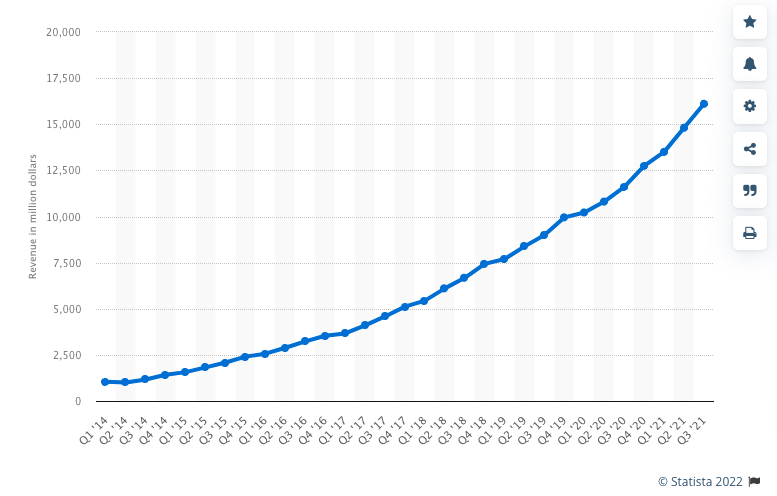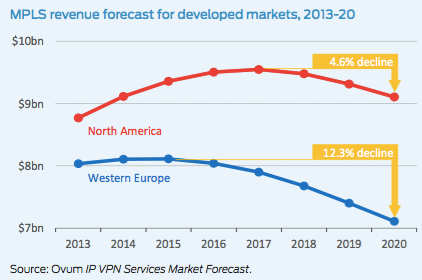Enterprises are used to the idea that the cloud is consumable. After all, cloud consumability is the characteristic that brings the chief cloud benefit: business agility. Why build and maintain your own data center space, power, equipment, etc. when you can simply click or API your way to thousands of servers? Scale up and scale down! Burst now! Pay as you go! Get nearly unlimited capacity! It’s all so very attractive in terms of building and maintaining the velocity needed to succeed in digital business.
For traditional IT teams, cloud consumability has been a revelation. For digital native DevOps and SRE teams, cloud consumability is a given. If there was a movie called “There Will be Cloud,” the evil protagonist’s quote would be, “I reach my straw across the Internet and drink unlimited infrastructure milkshakes!”

Okay, so I admit the analogy breaks down a little bit. You don’t just get to drink the cloud providers’ milkshakes. In fact, you have to pay by the drink. And sometimes you get to the end of the drink and unexpectedly have to pay more. But there’s an even bigger problem: the straw. In one way or another, traditional interconnection choices kind of, well, suck (sorry had to). In fact, for most enterprises, the WAN is one of the biggest obstacles to achieving the full potential of digital cloudy goodness. But the good news is that this is rapidly changing.
The WAN is now a cloud service, and yours can be too.
SD-WAN and SASE Aren’t the End-All
Once upon a time in the hoary olden days of several years ago, cloud and SaaS were getting pretty exciting but the WAN was still pretty boring. Compare Figure 1 (AWS quarterly revenue) versus Figure 2 (MPLS revenue forecast 2013-2020).

MPLS VPN services had been the mainstays of enterprise WANs for over a decade and were the rule for how you connected all your facilities. True, remote access VPNs into the corporate network were possible… with a hardware gateway in your data center.

But things were starting to change with the advent and rapid rise of SD-WANs. Within a few years, not only was SD-WAN crossing the chasm, but its evolutionary offspring Secure Access Service Edge (SASE) began a rocketship adoption ride that was further boosted by pandemic-induced remote work.
The overall reason for this SD-WAN and SASE network transformation is simple—the cloud. As cloud adoption and SaaS became inevitable and ubiquitous, they signaled that the Internet could be relied upon to transport most end-user traffic with sufficient performance and reliability. The perception that you need to privately host all applications, and thus maintain so many private data center facilities, was no longer a tenable architectural position. This in turn meant that SD-WAN and SASE running VPN tunnels over the Internet could in many cases be plausibly used to replace MPLS WAN for branch and remote site connectivity. Furthermore, cloud and SaaS providers were building their data centers regionally to be within roughly 50 milliseconds of most business-class office and remote user locations. Backhauling Internet-bound traffic from a branch office over a costly MPLS circuit to a data center, only to exit to the Internet further away from the branch or remote office no longer made performance or economic sense. Don’t get me wrong, MPLS VPN isn’t vanishing, far from it, but it’s no longer the only game in town.
Not only did SD-WAN and SASE occur because of the cloud, they are for the most part cloud-based service models. They also offer an accessible version of network automation that allows enterprise network teams to make policy-based routing of traffic based on application type practicable.

It would be easy to think that with the rise of SD-WAN and SASE, the quest for cloud-oriented network agility was finished. You connect your offices to the Internet, run some VPN tunnels, configure some routing policies, and bada-bing! You’ve got all of the modern enterprise WAN that you need. But that would be the wrong conclusion. The reason is that the cloud didn’t just influence end-user access to computing resources and applications, it also profoundly changed the dynamics at the core of the enterprise IT architecture.
The Rise of the Enterprise Cloud Core
Cloud computing isn’t just a location change in where enterprise applications are physically hosted. It’s also a distributed way of building applications, combined with a quantum leap in infrastructure automation and scalability. Cloud computing (and its SaaS spawn) is the enabler for and beneficiary of enterprise digital transformation, which has, in turn, resulted in an explosion of cloud-based apps, services, and data consumed by a massive and growing set of human and machine users.
So it’s important to remember that the cloud’s impact on the enterprise WAN isn’t just about altering the way that remote users connect to applications. There is also a tectonic shift in the core of the enterprise IT machinery, from monolithic data centers to distributed computing and storage resources connected together as a hybrid and multi-cloud core, scaling up relentlessly as digital data and workflows grow exponentially.
In other words, in the cloud era there are now two distinct domains of the enterprise WAN.
Enterprise User Access: Predictable, Modest Bandwidth Demands
The enterprise user access domain that relies on SD-WAN or SASE overlays, and Internet, MPLS, or 5G mobile last-mile connectivity to get users to a service edge. That service edge might be a CDN, a colocation data center, or a public cloud service. This user access domain has fairly predictable and relatively low bandwidth needs that tend to grow steadily over time. By predictable, think of how often a campus Ethernet switch needs to be upgraded, and by extension how often you upgrade the bandwidth level of a branch office MPLS or Internet connection, or for that matter your home Internet. These changes don’t happen in hours, days, or even months typically. I say that end user access requires relatively low bandwidth. It’s common knowledge that most web applications don’t use much bandwidth, but most of us assume that UCaaS video conferencing like Zoom is a major bandwidth hog. However, consider this July 2021 NCTA study that showed very moderate bandwidth consumption for a multi-party UCaaS video conference call, and more fascinating, that as additional video conference calls were added, bandwidth consumption only increased incrementally:
This again underlines why the Internet, even though it is an unpredictable medium, works fine for most end-user applications.
Cloud Core: Unpredictable and Heavy Bandwidth Demands
Consider a single data center. It’s going to be internally connected with the fastest connectivity you can (reasonably) get. But what happens when that single data center goes distributed? When you’ve got colocation data centers, public cloud VPCs, enterprise SaaS like Salesforce, etc. all moving data around to drive apps and services and satisfy not only end-user requests, but major M2M business processes like analytics, payment processing, trading transactions, ecommerce back-ends, logistics coordination, inventory management, quarter-end financial reporting, etc. What about how the shift of user demands around the world or due to market changes cause unpredictable pressures on the system? For example, you’ve got an e-commerce site and a k-pop star Instagrams your outfit from fashion week and all of a sudden your site explodes with demand, along with all the network connectivity that links all the apps and services together to satisfy that demand. Or what if you need to move Petabytes of data from one cloud to another for an analytics project?
The fact is that in a digital business world, connectivity for the cloud core is intense and unpredictable. And that’s on top of the normal fluctuations in bandwidth requirements due to seasonality, new business initiatives, and corporate events like mergers and acquisitions. Your architecture matters a lot in the cloud core. You don’t want to connect data lakes with a plastic straw.
Good News: Cloud Connectivity That Works Like the Cloud
Nobody would seriously consider using Internet connectivity for mission-critical data center and cloud interconnections at any scale. But traditional telco connections are also highly problematic. They’re slow to provision and come laden with inflexible contracts that rob you of the ability to flex your cloud connectivity to meet all those changing and unpredictable digital business demands.
Fortunately, there is a better answer. Network-as-a-Service (NaaS) provides a combination of private, telco-style networks combined with cloud native programmability, operational, and billing flexibility to make WAN behave like a cloud service. NaaS (also called middle mile) services are natively automated to allow enterprises to consume high-speed (Up to 100G+) private connections between colocation data center, public cloud, SaaS, Internet Exchange, and independent cloud providers on-demand via a portal or REST API. In some cases, you can even get 100Gbps bandwidth by the hour.
What do you get from a WAN core that acts like the cloud?
- Network agility: In digital business, agility is everything. It’s the antidote to unpredictability and it’s the way to succeed. You count on cloud and SaaS to give you that agility. Now your WAN acts the same.
- Supply chain freedom: As more pieces of your business migrate into the cloud, you can get high-speed connectivity without dealing with physical networking infrastructure. For example, you can privately connect AWS, Azure, and Google cloud VPCs together at high speeds in minutes.
- Optimal operations: Think how wasteful the typical networking trade-offs are for backup and disaster recovery. Should you invest in just the (much lower) bandwidth you’ll need to support the incremental backups, or the (much higher) bandwidth you’ll need to be sure of achieving your Recovery Time Objective? If the former, you risk your business continuity, if the latter, you waste most of that bandwidth for 100% of the time you don’t have a recovery requirement. But what if you could have a 1Gbps connection for your everyday and incremental backup needs, but burst up to 100Gbps by the hour in the case of a recovery scenario? Greater continuity at much lower overall costs are possible when consumption models are more cloud-like.
What Are You Waiting For?
If you’re wondering if this is for you, we make trying NaaS easy. You can register and start using services right now. Or if you’d prefer to get a demo and understand NaaS functionality more in-depth, just let us know. Either way, this is how you can turn your WAN into a cloud service.